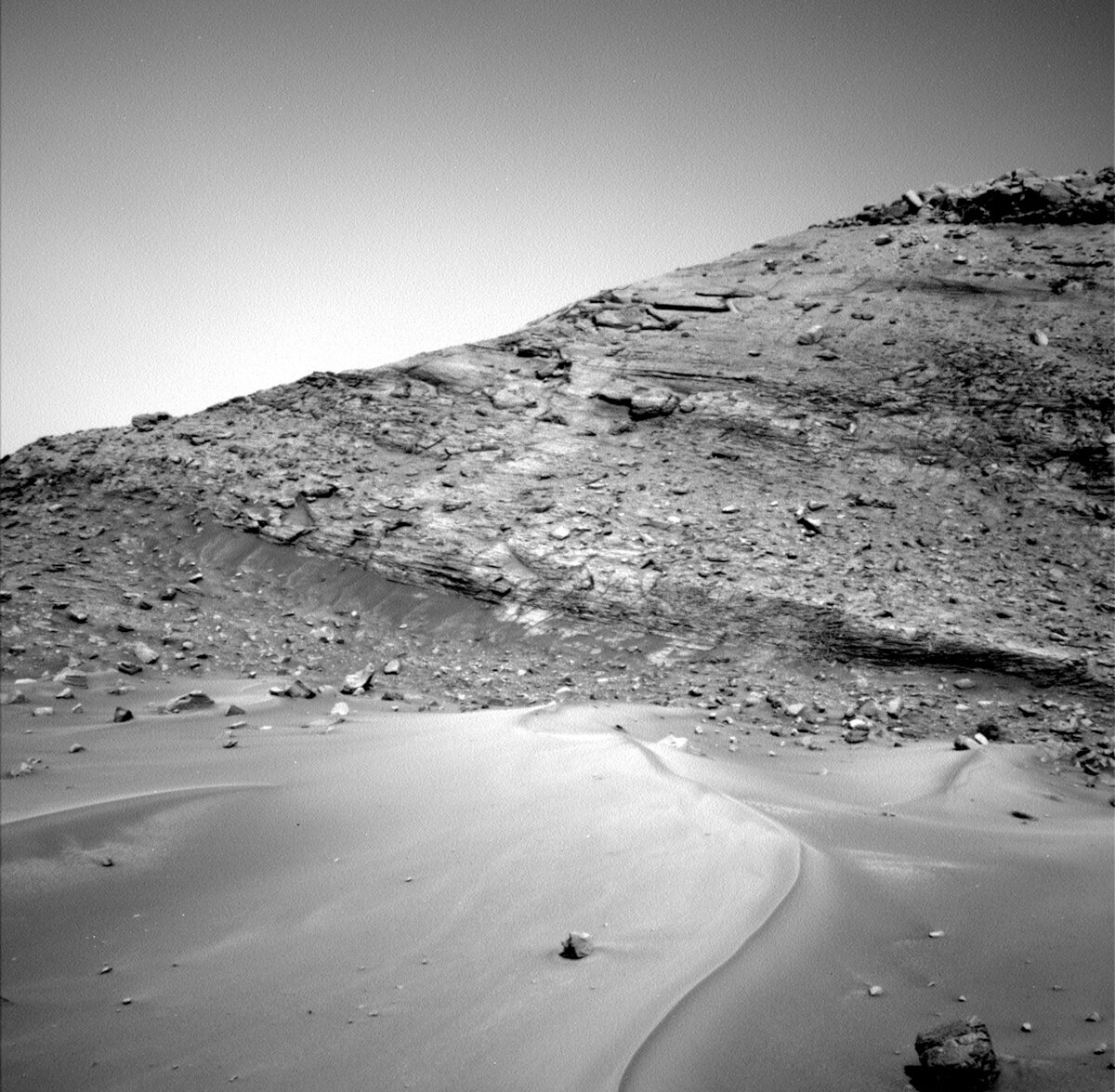2 min read

Curiosity continues to conquer obstacles as we enter our 11th year of operations on Mars. Curiosity is working her way through Paraitepuy Pass, with stunning views and challenging terrain, as seen in the above Navcam image. The weekend drive stopped a little short, but the team is ready to push forward through this valley and make some great observations along the way.
Today’s two-sol plan starts with a ChemCam observation of the appropriately named “Perseveranca” target, as a nod to dedication and hard work that has gotten the rover this far. After studying the chemistry of the nearby cliff face, ChemCam will turn its sight to the distant hills to get a long distance RMI mosaic of “Deepdale,” and an RMI mosaic of the aeolian bedform named “Baia,” which is visible in the above image. Then Mastcam will acquire some complementary images of these features, along with a multispectral observation of a float block with interesting layering. Mastcam will also document the nearby cliff face of Bolivar, with a large mosaic intended to capture the exposed stratification. The team also planned Mastcam imaging of several MAHLI targets, and a coordinated observation with MARDI to look for changes in the windblown sand. Then the attention turns to MAHLI, with three separate targets planned to assess the stratification and diagenetic features in the blocks in our workspace, at targets named “Sao Marcos,” “Essequibo,” and “Kumu Falls.” After the arm work, Curiosity will continue driving to the southeast, to get to a position to better image the road ahead.
The second sol is devoted to untargeted observations, with a number of environmental monitoring observations. Navcam will acquire images and movies to assess the dust content in the atmosphere and search for dust devils, as well as looking for changes in the fines on the rover deck. ChemCam will also assess an autonomously selected target. Several other images at different times of day will be used to monitor high altitude clouds, to assess their height and velocity. I was on shift as Long Term Planner today, and it was fun to think about just how far we’ve come to get to this point, while also making plans for all of the discoveries that lie ahead!
Written by Lauren Edgar, Planetary Geologist at USGS Astrogeology Science Center







